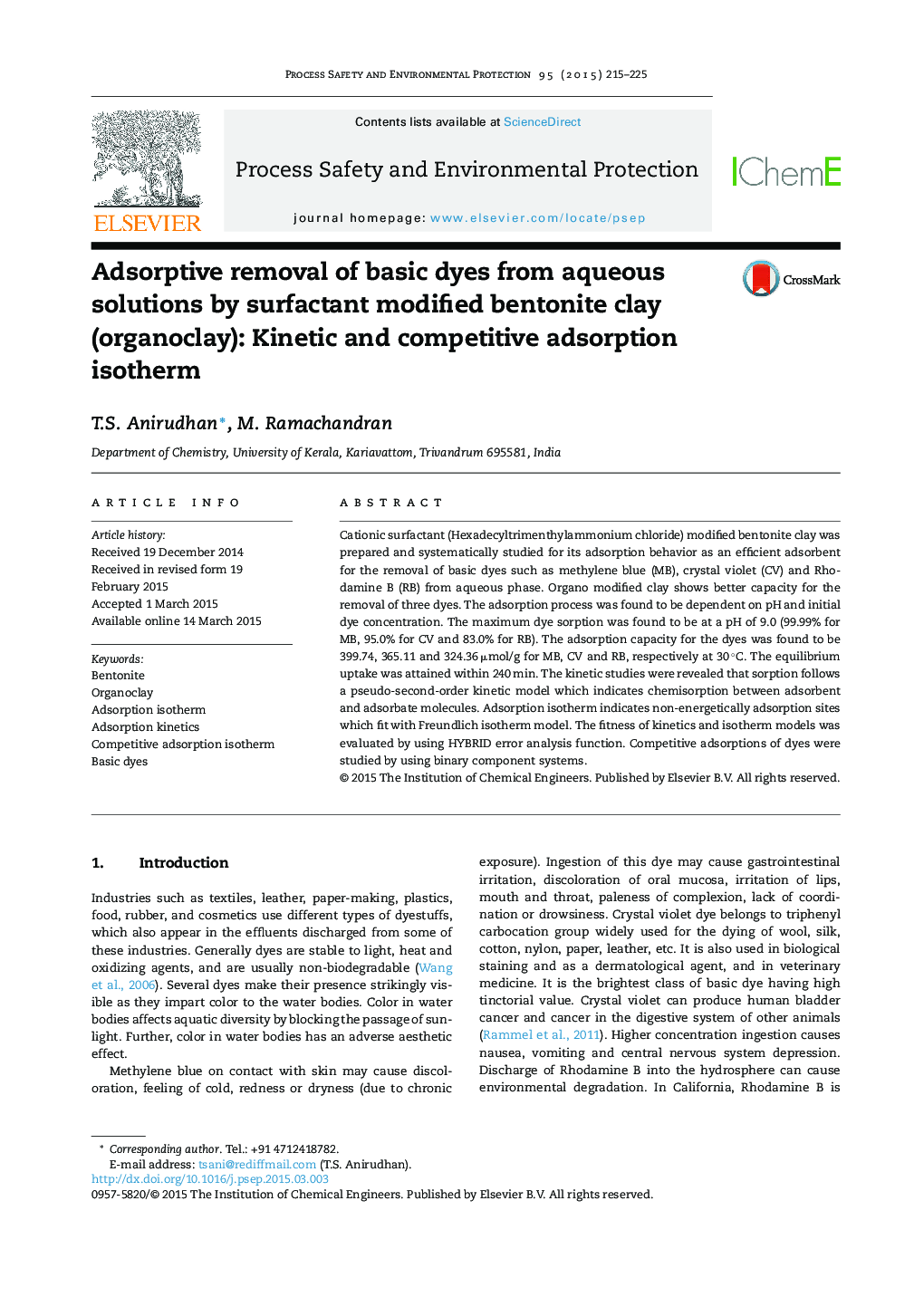| کد مقاله | کد نشریه | سال انتشار | مقاله انگلیسی | نسخه تمام متن |
|---|---|---|---|---|
| 588268 | 1453343 | 2015 | 11 صفحه PDF | دانلود رایگان |

• Removal of basic dyes, methylene blue (MB), crystal violet (CV) and Rhodamine B (RB), was successfully carried out with organoclay.
• The maximum dye sorption was found to be at a pH of 9.0 which is higher than pHzpc.
• The mechanism was described with adsorption/partition model.
• HYBRID error analysis was applied successfully.
Cationic surfactant (Hexadecyltrimenthylammonium chloride) modified bentonite clay was prepared and systematically studied for its adsorption behavior as an efficient adsorbent for the removal of basic dyes such as methylene blue (MB), crystal violet (CV) and Rhodamine B (RB) from aqueous phase. Organo modified clay shows better capacity for the removal of three dyes. The adsorption process was found to be dependent on pH and initial dye concentration. The maximum dye sorption was found to be at a pH of 9.0 (99.99% for MB, 95.0% for CV and 83.0% for RB). The adsorption capacity for the dyes was found to be 399.74, 365.11 and 324.36 μmol/g for MB, CV and RB, respectively at 30 °C. The equilibrium uptake was attained within 240 min. The kinetic studies were revealed that sorption follows a pseudo-second-order kinetic model which indicates chemisorption between adsorbent and adsorbate molecules. Adsorption isotherm indicates non-energetically adsorption sites which fit with Freundlich isotherm model. The fitness of kinetics and isotherm models was evaluated by using HYBRID error analysis function. Competitive adsorptions of dyes were studied by using binary component systems.
Commercially available bentonite clay was converted into organo modified one with hexadecyltrimethylammonium chloride and was used as an adsorbent for the removal of basic dyes such as methylene blue (MB), crystal violet (CV) and Rhodamine B (RB). The amount of surfactant used is twice the cation exchange capacity of bentonite. The mechanism of this adsorption process is also explained on the basis of adsorption/partition model. The organic fraction of the surfactant modified clays with long alkyl chains behaves mechanistically as a partition medium, where clay mineral acts as the conventional adsorbent in the uptake of organic compounds.Figure optionsDownload high-quality image (192 K)Download as PowerPoint slide
Journal: Process Safety and Environmental Protection - Volume 95, May 2015, Pages 215–225